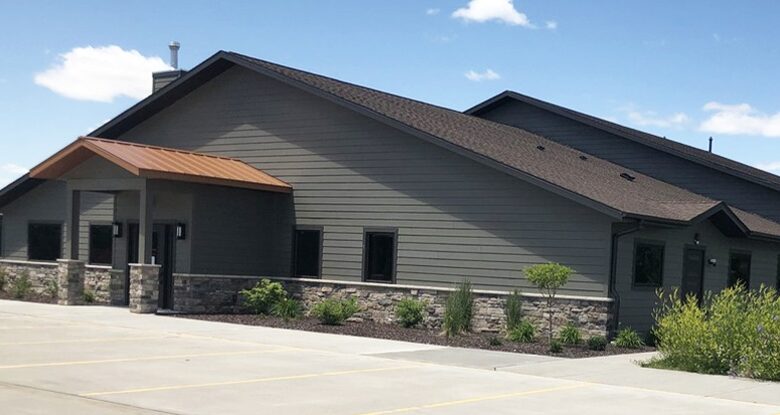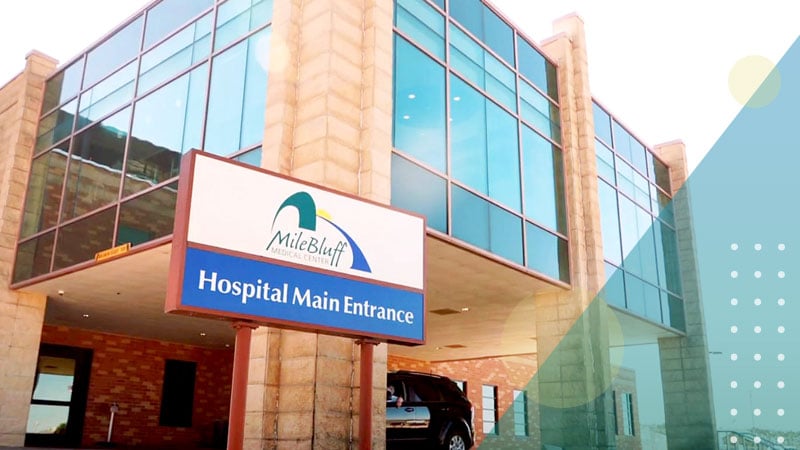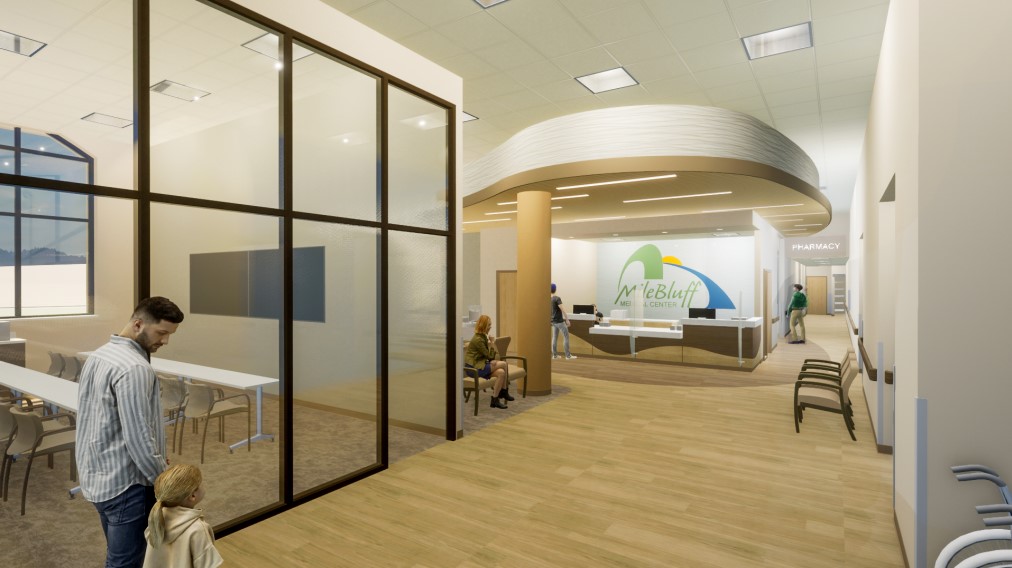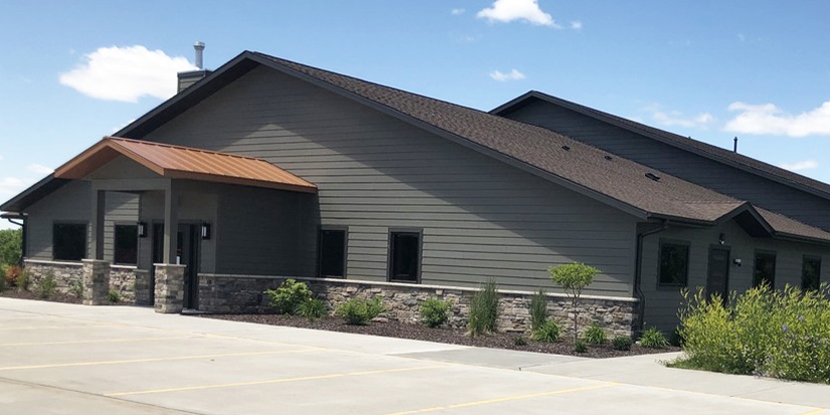
Mile Bluff Brings Virtual ICU to Mauston
Mile Bluff brings virtual intensive care to Mauston, offering a groundbreaking approach to healthcare in rural communities. This innovative program aims to improve access to critical care, making it more convenient and potentially more affordable for patients in need. The program leverages cutting-edge technology to provide remote monitoring and support, a significant step forward in healthcare accessibility, especially for those in remote locations.
This new initiative promises to enhance patient experience and outcomes. The detailed comparison between traditional and virtual intensive care will be examined, along with a comprehensive look at the technology and support systems in place. Furthermore, the program’s impact on the Mauston community, and its potential to shape the future of healthcare delivery, will be thoroughly explored.
Introduction to Mile Bluff’s Virtual Intensive Care

Mile Bluff Medical Center is pioneering a new approach to intensive care in Mauston, leveraging virtual technology to enhance patient care and accessibility. This virtual intensive care program aims to provide comprehensive, high-quality care while addressing the unique challenges of rural healthcare. The program represents a significant advancement in medical technology and is expected to positively impact the health outcomes of patients in the Mauston area.This innovative program leverages telemedicine technology to connect patients with specialized intensive care physicians and nurses remotely.
This approach allows for prompt intervention and monitoring of critical conditions, while also reducing the need for lengthy hospital stays and potentially preventing unnecessary complications. The goal is to provide timely, high-quality care in a more convenient and cost-effective manner, particularly for those in remote areas.
Program Goals and Outcomes
The primary goals of Mile Bluff’s virtual intensive care program are to improve access to critical care, enhance patient outcomes, and optimize resource utilization. Expected outcomes include reduced hospital readmissions, shorter length of stay for patients, and improved patient satisfaction. The program also aims to ease the burden on existing healthcare resources, allowing for more efficient allocation of personnel and equipment.
Benefits for Patients in Mauston
Virtual intensive care offers several key advantages for patients in Mauston. It provides immediate access to specialized medical expertise, potentially reducing the time it takes to receive life-saving treatment. This can be particularly crucial in situations where rapid response is critical. The program also aims to improve the quality of life for patients by minimizing the disruption to their daily routines associated with traditional hospital stays.
It may also reduce the financial burden associated with long-term hospital care.
Comparison of Traditional and Virtual Intensive Care, Mile bluff brings virtual intensive care to mauston
| Feature | Traditional Intensive Care | Virtual Intensive Care |
|---|---|---|
| Cost | Higher due to hospital facilities, staffing, and equipment costs. | Potentially lower due to reduced hospital stays and lower staffing requirements. |
| Accessibility | Limited by physical location of the hospital. | Enhanced accessibility, allowing remote patients to receive care. |
| Patient Experience | Potentially more disruptive due to hospital stay, separation from home. | Potentially less disruptive, allowing for continued familiarity with home environment. |
| Staff Involvement | Higher staff involvement due to direct patient care in a hospital setting. | Reduced direct staff involvement in some aspects, allowing for remote management. |
| Monitoring Capabilities | Real-time monitoring of vital signs and other metrics in the hospital. | Real-time remote monitoring of vital signs and other metrics through telemedicine technology. |
Technology and Infrastructure

Mile Bluff’s virtual intensive care program relies heavily on a robust technological infrastructure to provide seamless and secure remote patient care. This approach allows for real-time monitoring and intervention, improving patient outcomes and reducing the burden on local hospitals. The key components of this infrastructure, from the software to the security protocols, are crucial to the program’s success.The technology supporting the virtual intensive care program is designed to be both highly functional and secure.
This includes advanced telehealth platforms, allowing for real-time communication and data exchange between medical professionals and patients. The program prioritizes patient safety and confidentiality, adhering to strict security measures and protocols.
Technology Used
The virtual intensive care program leverages a cloud-based platform for secure storage and processing of patient data. This platform is equipped with advanced data encryption techniques to protect sensitive patient information. Remote monitoring tools are integrated into the platform, providing real-time updates on vital signs and other crucial parameters. The platform is designed to integrate with existing hospital systems, streamlining workflows and minimizing disruptions to existing processes.
Security Measures
Robust security measures are paramount in protecting patient data. These measures include multi-factor authentication for all users accessing the system, regular security audits, and adherence to strict HIPAA compliance standards. Access to patient data is strictly controlled and limited to authorized personnel. Regular security training for all personnel involved is essential to ensure ongoing compliance and awareness of security protocols.
Infrastructure Requirements
Reliable internet connectivity is essential for the successful delivery of virtual care. The program utilizes high-speed internet connections, ensuring low latency and minimizing delays in transmitting vital data. Redundant systems are in place to maintain service availability even in the event of network disruptions. Backup power systems and disaster recovery protocols are also implemented to ensure continuity of operations.
Remote Monitoring Tools
Remote monitoring tools are integral to the virtual intensive care program. These tools provide continuous monitoring of vital signs, including heart rate, blood pressure, respiratory rate, and oxygen saturation. Examples of such tools include wearable sensors, wireless blood pressure cuffs, and pulse oximeters. These devices transmit data wirelessly to the central monitoring system, enabling timely interventions and proactive care management.
Mile Bluff’s innovative virtual intensive care program in Mauston is a game-changer. It’s truly impressive how they’re bringing top-tier medical care directly to the community. This forward-thinking approach reminds me a lot of the exciting new possibilities opening up in the healthcare industry, like the way virtual care is revolutionizing how we think about accessibility and convenience. This is all very similar to the early days of internet innovation, like when the internet was first developing, you could say, as a global network.
For example, check out this fascinating look at the early days of the internet, and how it impacted the world. Hello world! It’s clear that these advancements are not just improving healthcare but also paving the way for a more connected and accessible future, bringing essential care closer to everyone in the community. The program in Mauston is a fantastic example of this in action.
Equipment Used in Virtual Intensive Care
| Equipment Type | Description | Function |
|---|---|---|
| Sensors | Small, wearable devices that monitor vital signs | Collect and transmit data on heart rate, blood pressure, respiration, and oxygen saturation to the central monitoring system. |
| Cameras | High-resolution cameras | Provide visual monitoring of the patient, enabling healthcare providers to assess patient condition and ensure patient safety. |
| Communication Devices | Video conferencing systems, telephones, and messaging platforms | Facilitate real-time communication between healthcare providers and patients, allowing for prompt consultations and interventions. |
| Monitoring Systems | Centralized software platform | Collect, process, and display data from various monitoring devices, providing a comprehensive view of the patient’s condition. |
| Wireless Transmitters | Devices that transmit data wirelessly | Enable seamless and reliable data transmission between monitoring devices and the central monitoring system. |
Patient Care and Support: Mile Bluff Brings Virtual Intensive Care To Mauston

Mile Bluff’s virtual intensive care program offers a new paradigm for patient care, extending specialized medical attention to patients in Mauston and surrounding areas. This innovative approach leverages technology to provide comprehensive support, ensuring patients receive the same level of care as if they were in a traditional intensive care unit (ICU). This section will delve into the specifics of patient selection, staff qualifications, support systems, emergency protocols, and follow-up care within this virtual environment.The program carefully considers the needs of a wide spectrum of patients who might benefit from this virtual care program.
These patients, from those experiencing critical illness to those needing ongoing monitoring, will experience a higher level of care while reducing the need for extended hospital stays, facilitating quicker recoveries, and decreasing hospital costs.
Patient Selection Criteria
The program is designed for patients requiring intensive monitoring and care but who do not necessarily require the full spectrum of services offered in a traditional ICU. This includes patients with acute respiratory distress syndrome (ARDS), sepsis, or severe trauma who can be monitored and managed remotely. Patients with chronic conditions like congestive heart failure, chronic obstructive pulmonary disease (COPD), and kidney failure may also benefit from the continuous monitoring offered by this virtual care program.
Staff Qualifications and Training
The virtual intensive care staff comprises highly trained medical professionals, including physicians, registered nurses, and respiratory therapists. These professionals undergo rigorous training in virtual care protocols, telehealth technologies, and advanced life support techniques. They are adept at utilizing remote monitoring devices and interpreting data from vital signs, lab results, and other patient information. Critical care nurses have extensive experience in patient care, medical emergencies, and life support, with an added emphasis on technology-driven care and remote monitoring systems.
Patient and Family Support Systems
Patients and their families are provided with ongoing support through dedicated care coordinators and social workers. These individuals are available to answer questions, address concerns, and provide emotional support. Regular communication is maintained, and educational materials are provided to ensure patients and families understand the virtual care process. Detailed instructions and training sessions are provided for both patients and families on how to utilize the technology and interact with the medical team.
Emergency Protocols During Virtual Care Sessions
A robust emergency protocol is in place to address any critical situations that may arise during virtual care sessions. This includes clear communication channels, pre-established escalation procedures, and guidelines for rapid response. The system incorporates immediate notification of medical staff when a patient’s condition deteriorates, utilizing a real-time monitoring system to ensure timely intervention.
Follow-up Care after Virtual Intensive Care
Follow-up care is a crucial component of the virtual intensive care program. Patients receive personalized plans for recovery and rehabilitation, tailored to their specific needs. Regular follow-up appointments with their primary care physicians are scheduled, and referrals to specialists are coordinated as needed. This ensures a smooth transition from virtual care to ongoing medical management.
Emergency Handling Protocol Table
| Emergency Type | Immediate Actions | Escalation Procedures |
|---|---|---|
| Equipment Malfunction | Identify the malfunction. Isolate the issue. Attempt troubleshooting. Document the issue. | Notify the designated IT support team. If the malfunction affects patient monitoring, immediately notify the medical team. Escalate to a higher level of technical support if necessary. |
| Patient Deterioration | Immediately reassess vital signs. Administer any prescribed medications. Initiate appropriate life support measures. Document all actions. | Alert the medical team immediately. If deterioration is significant, activate the emergency response protocol. Consult with a physician via video conferencing. Document all actions taken. |
| Technical Issues | Identify the technical problem. Document the error. Try restarting the system. | Contact the IT support team. Inform the medical team about the issue and its potential impact on patient monitoring. Escalate the issue to a higher level if the problem persists. |
Community Impact and Accessibility
Mile Bluff’s virtual intensive care initiative in Mauston represents a significant stride towards improving healthcare access in rural areas. This innovative approach leverages technology to bridge the gap between patients and specialized care, potentially transforming the way healthcare is delivered in similar communities across the nation. The program aims to not only improve patient outcomes but also bolster the economic health of the region.This section delves into the program’s impact on Mauston’s healthcare landscape, examining its economic benefits, and highlighting the strategies employed to ensure equitable access for all residents.
It also explores potential challenges and compares Mile Bluff’s initiative to other virtual care programs in similar communities.
Mile Bluff bringing virtual intensive care to Mauston is a fantastic leap forward in healthcare accessibility. This innovative approach, however, is just one piece of a larger puzzle. As we look to the future of healthcare, it’s crucial to consider sustainable solutions, like the exploration of alternative materials in energy production, which could revolutionize how we power our medical facilities.
Ultimately, the advancements in virtual care, like what Mile Bluff is doing, will become even more impactful as we embrace these innovative energy solutions. the future of sustainable energy looks to alternative materials are key to a brighter, healthier future for all.
Impact on Healthcare Access for Patients in Mauston
The virtual intensive care unit (ICU) provides immediate access to critical care for patients in Mauston, reducing the need for lengthy transfers to larger facilities. This reduces the stress and anxiety associated with transport and improves the likelihood of timely intervention, ultimately enhancing patient outcomes. Patients in Mauston, previously faced with lengthy travel times and potential delays in receiving critical care, now benefit from immediate access to specialized medical expertise.
The program directly addresses the challenge of limited access to specialized healthcare often experienced by rural communities.
Economic Impact on the Community
The program’s economic impact is multifaceted. Reduced transfer costs for patients, along with the potential for decreased length of hospital stays, directly translate into financial savings for the community. Furthermore, the program could attract healthcare professionals and specialists to Mauston, potentially fostering the growth of related businesses and services. This improved access to care could also lead to increased tourism for the region, as people seek healthcare services in the area.
Addressing Rural Healthcare Needs
Mile Bluff’s virtual ICU directly addresses the fundamental challenge of rural healthcare – the distance to specialized care. The program allows for remote monitoring and management of critically ill patients, enabling them to receive the care they need in their community. This is crucial for maintaining patient stability and comfort, and potentially reducing the need for complex and time-consuming transfers.
The program also fosters the development of local healthcare expertise, empowering the community with specialized knowledge and skills.
Ensuring Equitable Access for All Residents
To ensure equitable access, Mile Bluff has implemented a system of financial assistance programs for those who cannot afford the virtual care services. This approach prioritizes the needs of all community members regardless of socioeconomic status. Accessibility is also facilitated through clear communication channels, including multiple languages and diverse formats of information. Furthermore, the program has partnered with local community organizations to promote awareness and utilization of these services.
Potential Challenges in Implementing Virtual Care in Rural Areas
Implementing virtual care in rural areas faces several challenges. Reliable internet access can be inconsistent, impacting the quality and reliability of virtual consultations. Ensuring that healthcare providers in rural areas have the necessary technical skills and training to utilize the virtual platform is also crucial. Addressing these challenges requires a multifaceted approach that includes investing in infrastructure improvements and providing comprehensive training for healthcare professionals.
Comparison to Other Virtual Care Initiatives
| Program | Location | Focus | Impact |
|---|---|---|---|
| Mile Bluff’s Program | Mauston, WI | Virtual Intensive Care | Improved access to critical care, reduced transfer costs, potential for economic growth |
| Example Program 1 | Rural County, CA | Telehealth for Primary Care | Increased access to primary care, reduced wait times for appointments |
| Example Program 2 | Mountain Town, CO | Virtual Cardiology Consultations | Reduced need for travel to specialized facilities, improved patient outcomes |
Note: This table provides a simplified comparison. More comprehensive analyses would require detailed data on each program.
Future of Virtual Intensive Care
Mile Bluff’s pioneering virtual intensive care unit (ICU) in Mauston marks a significant step toward the future of healthcare. This innovative approach, leveraging technology and remote monitoring, holds immense potential for expanding access to critical care and transforming how we deliver medical services. The evolution of virtual ICUs is not just about convenience; it’s about enhancing patient outcomes and improving the efficiency of the healthcare system.The future of virtual intensive care is painted with a blend of technological advancements and a profound understanding of patient needs.
We can anticipate a more integrated approach to healthcare, where virtual ICUs become an integral part of the overall patient journey, from diagnosis to recovery. This integration will rely heavily on technological advancements, particularly in artificial intelligence and data analysis, to deliver personalized and predictive care.
AI-powered Diagnostics
Artificial intelligence (AI) is poised to revolutionize diagnostic capabilities in virtual ICUs. AI algorithms can analyze vast quantities of patient data, including vital signs, lab results, and imaging scans, to identify subtle patterns and anomalies that might be missed by human clinicians. This capability can enable faster and more accurate diagnoses, leading to timely interventions and improved patient outcomes.
For example, AI-powered image analysis can detect subtle changes in chest X-rays or CT scans that could indicate developing pneumonia or other critical conditions, enabling prompt intervention.
Personalized Treatment Plans
Virtual intensive care will likely evolve to tailor treatment plans to individual patient needs. By analyzing patient-specific data and medical history, AI algorithms can recommend optimized treatment strategies. This personalized approach will allow for more effective and efficient use of resources, leading to better patient outcomes. For instance, an AI system could predict a patient’s response to a particular medication and adjust the dosage accordingly, minimizing side effects and maximizing efficacy.
Predictive Modeling
Predictive modeling in virtual intensive care will become increasingly important. By analyzing historical data and current patient conditions, algorithms can predict potential complications and develop proactive strategies to mitigate them. This capability will be critical in preventing critical events and maintaining stability in remote patient monitoring. A predictive model could anticipate a patient’s risk of developing sepsis based on their current vital signs and medical history, enabling preventive measures to be taken.
Expansion to Other Specialties
The fundamental principles of virtual care, such as remote monitoring and data-driven decision-making, have the potential to expand beyond intensive care. We can expect to see virtual care integrated into other medical specialties, including cardiology, oncology, and emergency medicine. This expansion will further enhance access to specialized care and improve patient outcomes in various medical contexts. For instance, remote monitoring of patients with chronic conditions could allow for earlier intervention and prevent hospitalizations.
Continued Research and Development
The evolution of virtual intensive care necessitates ongoing research and development. This includes investigating the ethical considerations of AI in healthcare, refining algorithms for accurate diagnostics, and ensuring the security and privacy of patient data. It also requires the creation of robust infrastructure and protocols for reliable and seamless communication between patients and healthcare providers.
Potential Future Advancements in Virtual Intensive Care
| Advancement | Description | Potential Impact |
|---|---|---|
| AI-powered Diagnostics | Algorithms analyze patient data to detect anomalies and predict potential complications. | Faster, more accurate diagnoses, improved patient outcomes, reduced diagnostic errors. |
| Personalized Treatment Plans | AI-driven recommendations for optimized treatment strategies based on individual patient data. | Improved treatment efficacy, reduced side effects, enhanced patient outcomes. |
| Predictive Modeling | Algorithms predict potential complications and develop proactive strategies. | Prevention of critical events, reduced hospitalizations, improved patient stability. |
| Augmented Reality (AR) Guidance | AR overlays provide real-time guidance for procedures and interventions. | Improved precision in remote procedures, enhanced training for healthcare providers. |
| Integration with Wearable Sensors | Continuous monitoring of patient vital signs using advanced wearable sensors. | Early detection of critical changes, proactive interventions, reduced hospital readmissions. |
Wrap-Up
Mile Bluff’s pioneering virtual intensive care program in Mauston signifies a vital step toward revolutionizing healthcare access for rural communities. The program’s potential to enhance patient experience, lower costs, and address healthcare disparities makes it a model for similar initiatives. By combining advanced technology with compassionate care, Mile Bluff is demonstrating a clear vision for the future of healthcare in underserved areas.
This program will undoubtedly impact healthcare delivery, prompting broader conversations about how technology can enhance access to critical care.

